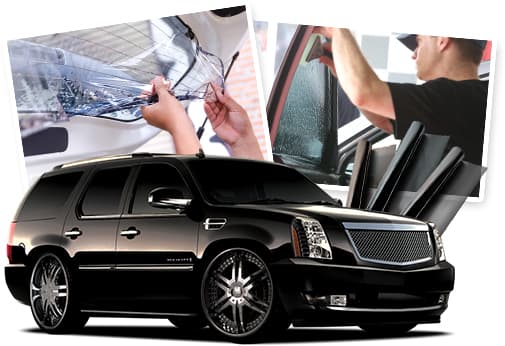General Compliance & Legislation On Legal Tint Limits
Local Compliance
It is legal to tint your car windows in most states. New cars have a very slight factory window tint integrated into the glass which does very little to block heat or harmful UV rays.
Legislation
Many jurisdictions have legislation that specifies and may limit what legal tint can be applied to the windows of personal use vehicles. The following provides general information and a summary of the window tint regulations in the United States and Canada. For information on applicable window tint regulations in other countries contact the International Window Film Association.
Explanation of the State Window Tint Regulations Chart
Type: Film——-VLT% refers to the film itself
Net——–VLT% refers to the combined film & glass
Vague—–The language of the law is unclear, legislative intent is unclear, or interpretation is uncertain.
Windshield: Presumably, NR tinting is permitted above the AS-1 line. If the law specifies only the AS-1 line, AS-1 appears. If AS-1 or specified inches appears, the AS-1 is assumed and only the number of inches down appears. (Note: NR is used in lieu of “No, Any, or a specific percentage” when the law permits unspecified “non-obstructive” or “Transparent” tinting materials. In these cases, window tint regulations inevitably depend upon each officer’s discretion.
Front Sides: No film or the actual percentage of VLT permitted. (Note: Because they may vary from state to state, manufacturer’s tolerances (i.e. + / – 3% VLT) are not listed on this chart, nor are they included in these VLT numbers).
Rear: No film or the actual percentage of VLT permitted.
% of Reflectivity: NR——–No metallic or mirrored appearance
NE———Not excessive (not specific)
MNIR—–Must not increase reflectivity
MBNR—-Must be non-reflective (not specific)
NMMA—-No metallic or mirrored appearance
NONE—–No reference to reflectivity in the current law
Restricted Colors: R (Red), A (Amber), Y (Yellow), B (Blue), G (Gold), BK (Black), N/S (Not specified)
Mirrors: YES or NO. (Note: Usually, a (YES means that dual outside mirrors are required if the back window is to be tinted.)
Certification Required: YES or NO. (Note: This refers to a requirement for manufacturers to certify the films they plan to sell before shipping them into the state.)
Certification Required: YES or NO. (Note: This refers to a requirement for manufacturers to certify the films they plan to sell before shipping them into the state.)
Stckr/Loc (Sticker Location): NO (No sticker is required) RECOMMEND (Sticker is recommended; can assist officers in identifying legal tint more easily.)
Specific Locations: The State requires unique language & design, which may entail precise wording and sizing.
Driver: The sticker is required between the film & glass on the driver’s side window.
Door: The sticker is required on the inside of the driver’s side doorjamb.
All: The sticker should be put between the film & glass on each tinted window.
Medical Exemption: YES or NO. (Note: For more details about the specific terms of the exemption, consult the law.)
This summary chart of state aftermarket tint regulation information is not a legal document. It is the result of independent research, using several sources of public state documents. Window tint regulations vary from state to state and province to province. Before applying any window tinting materials, installers should thoroughly review the appropriate state window tint regulations as well as local enforcement policies to insure compliance with all applicable standards.
Text taken from: https://www.tintworld.com





